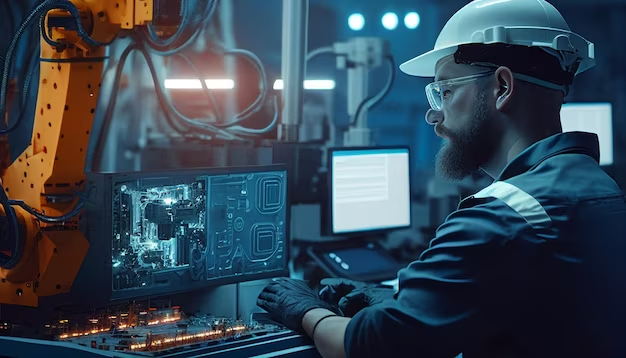As our world grapples with the urgent need for sustainability, the manufacturing sector stands at a critical juncture. Traditionally known for its substantial environmental footprint, manufacturing is now poised to lead a green revolution. This transformation isn’t just about meeting regulations or appeasing eco-conscious consumers—it’s about reimagining the very foundations of how we produce goods.
In this comprehensive guide, we’ll explore the compelling reasons for sustainable manufacturing, dive into cutting-edge practices and technologies, and showcase industry leaders paving the way towards a greener future.
The Imperative for Sustainable Manufacturing
Environmental Impact: A Call to Action
Climate change presents an unprecedented challenge to our planet. The manufacturing sector, responsible for a significant portion of global greenhouse gas emissions, has a crucial role to play in mitigating this crisis. Sustainable manufacturing practices offer a path to:
- Reduce carbon emissions
- Conserve natural resources
- Protect biodiversity and ecosystems
- Improve air and water quality
Resource Depletion: Securing Our Future
Our planet’s resources are not infinite. Sustainable manufacturing addresses this challenge by:
- Promoting resource efficiency
- Minimizing waste generation
- Exploring renewable and alternative materials
- Implementing circular economy principles
Consumer Demand: Meeting Market Expectations
Today’s consumers are more environmentally conscious than ever before. They’re demanding products that align with their values. Companies embracing sustainable practices can:
- Gain a competitive edge in the market
- Build brand loyalty among eco-conscious consumers
- Tap into the growing market for sustainable products
- Enhance their reputation and corporate social responsibility
Regulatory Compliance: Staying Ahead of the Curve
Governments worldwide are implementing stricter environmental regulations. Sustainable manufacturing helps companies:
- Comply with current and future regulations
- Avoid potential fines and legal issues
- Prepare for carbon pricing and emissions trading schemes
Embracing a Sustainable Future: Key Strategies and Technologies
1. Renewable Energy Integration
Transitioning from fossil fuels to renewable energy sources is a cornerstone of sustainable manufacturing. This includes:
- Solar power: Installing photovoltaic panels on factory roofs or nearby land
- Wind energy: Utilizing on-site wind turbines or investing in wind farms
- Geothermal power: Tapping into Earth’s heat for energy production
- Hydroelectric power: Leveraging water resources for clean energy
Case Study: IKEA has committed to producing as much renewable energy as it consumes by 2020, investing heavily in wind and solar power across its operations.
2. Energy Efficiency Optimization
Improving energy efficiency not only reduces environmental impact but also leads to significant cost savings. Strategies include:
- Upgrading to energy-efficient machinery and equipment
- Implementing smart lighting and HVAC systems
- Optimizing production schedules to minimize energy use during peak hours
- Conducting regular energy audits to identify improvement areas
Innovation Spotlight: The development of AI-powered energy management systems that can predict and optimize energy usage in real-time across manufacturing facilities.
3. Waste Reduction and Recycling
Minimizing waste and maximizing recycling are crucial for sustainable manufacturing. This involves:
- Implementing closed-loop manufacturing systems
- Utilizing recycled materials in production
- Designing products for easy disassembly and recycling
- Exploring industrial symbiosis opportunities
Success Story: Toyota’s zero-waste program has led to 93% of its North American facilities sending zero waste to landfills.
4. Sustainable Materials and Green Chemistry
The choice of materials can significantly impact a product’s environmental footprint. Sustainable options include:
- Biodegradable materials
- Recycled content
- Bio-based materials
- Low-impact synthetic materials
Emerging Trend: The use of mycelium (fungal roots) as a sustainable alternative to plastic packaging in manufacturing.
5. Life Cycle Assessment (LCA)
LCA is a powerful tool for understanding and improving the environmental impact of products throughout their lifecycle. Benefits include:
- Identifying hotspots for environmental improvement
- Informing eco-design decisions
- Supporting marketing claims and environmental certifications
- Enhancing supply chain sustainability
Tool Highlight: The development of AI-assisted LCA tools that can quickly analyze complex product systems and suggest improvements.
6. Smart Manufacturing and Industry 4.0
The integration of digital technologies is revolutionizing sustainable manufacturing:
- Internet of Things (IoT) for real-time monitoring and optimization
- Artificial Intelligence for predictive maintenance and process optimization
- Digital twins for virtual testing and simulation
- Additive manufacturing (3D printing) for reduced material waste
Future Vision: The concept of “dark factories”—fully automated, AI-driven manufacturing facilities that operate with minimal energy and resource use.
7. Water Conservation and Management
Water is a precious resource that sustainable manufacturing must protect:
- Implementing water recycling and reuse systems
- Adopting water-efficient manufacturing processes
- Harvesting rainwater for industrial use
- Treating and safely disposing of wastewater
Innovative Approach: The development of “water-positive” factories that purify more water than they consume, benefiting local communities.
Leading the Way: Sustainable Manufacturing Pioneers
Patagonia: Setting the Standard for Eco-Friendly Apparel
Patagonia has long been at the forefront of sustainable manufacturing in the apparel industry:
- Using recycled materials in their products
- Implementing repair programs to extend product life
- Encouraging customers to buy less through their “Don’t Buy This Jacket” campaign
- Pledging 1% of sales to environmental causes
Tesla: Driving the Future of Clean Energy Transportation
Tesla is revolutionizing the automotive industry with its focus on sustainable transportation:
- Producing electric vehicles with zero direct emissions
- Manufacturing batteries for both automotive and energy storage applications
- Building a network of solar-powered charging stations
- Committing to powering its Gigafactories with 100% renewable energy
Interface: Transforming the Carpet Industry
Interface, a global commercial flooring company, has set ambitious sustainability goals:
- Achieving carbon neutrality across its entire product lifecycle
- Developing carpets that sequester carbon from the atmosphere
- Implementing a circular economy model for carpet recycling
- Inspiring other industries with their “Climate Take Back” mission
Unilever: Sustainability at Scale
Unilever, a consumer goods giant, is proving that sustainability can be achieved at a massive scale:
- Committing to halve their environmental impact while doubling their business
- Sourcing 100% of agricultural raw materials sustainably
- Achieving zero non-hazardous waste to landfill across their global factory network
- Developing innovative packaging solutions to reduce plastic waste
The Road Ahead: Challenges and Opportunities
While the path to sustainable manufacturing is clear, challenges remain:
- Initial Investment Costs: Many sustainable technologies require significant upfront investment.
- Technological Barriers: Some industries face unique challenges in adopting sustainable practices due to technological limitations.
- Supply Chain Complexity: Ensuring sustainability throughout global supply chains can be challenging.
- Skills Gap: There’s a need for workers skilled in sustainable manufacturing practices and technologies.
However, these challenges also present opportunities:
- Innovation: The drive for sustainability is spurring technological breakthroughs and creative solutions.
- New Markets: Sustainable products are opening up new market segments and revenue streams.
- Collaboration: Addressing sustainability challenges is fostering unprecedented collaboration across industries and sectors.
- Economic Benefits: In the long run, sustainable practices often lead to cost savings and improved efficiency.
Conclusion: A Call to Action for a Sustainable Future
The future of manufacturing is undeniably green. By embracing sustainable practices and technologies, manufacturers can:
- Ensure the long-term viability of their operations
- Meet the growing demand for eco-friendly products
- Comply with increasingly stringent regulations
- Contribute to global efforts to combat climate change
As we move forward, continuous innovation, collaboration, and commitment will be key to realizing the full potential of sustainable manufacturing. It’s not just about reducing negative impacts—it’s about reimagining manufacturing as a force for positive change in the world.







